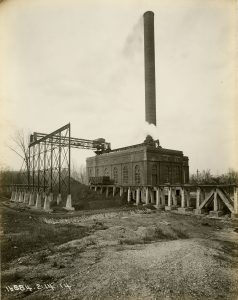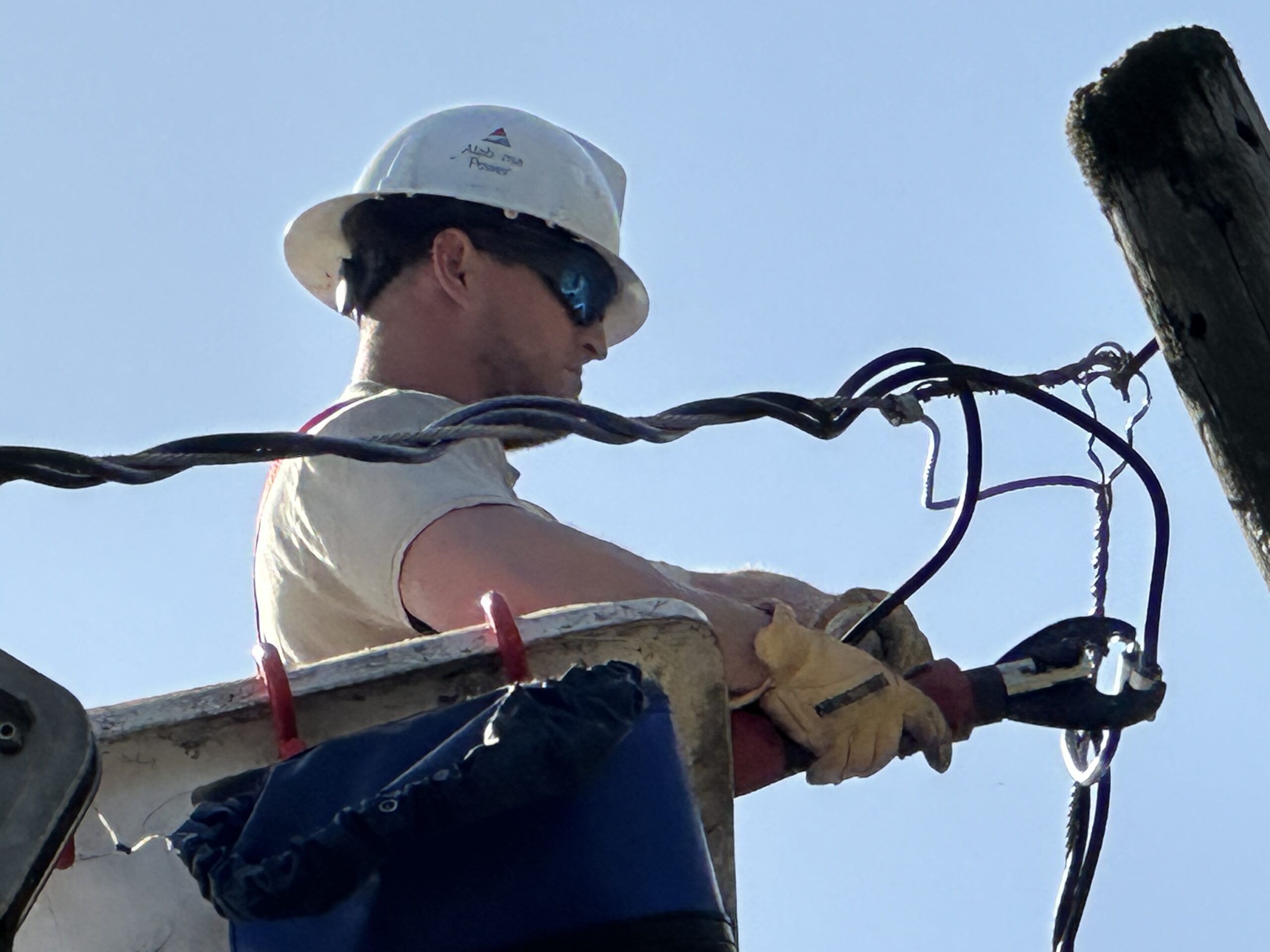Alabama Power’s Plant Gadsden slated for demolition after 110-year history

Alabama Power has announced the retirement of its oldest power plant, the Gadsden Steam Plant, after 109 years. The retirement is set for Jan. 1, 2023. (Alabama Power Archives)
Plant Gadsden is set to be demolished early this Saturday morning, with both the boilers and tower slated to be collapsed. The plant provided steam-generated electricity to the surrounding area for more than a century.
Located off the Coosa River on a 213-acre site, the plant began operations in 1913. Plant Gadsden was the first plant built by Alabama Power and initially produced 10,000 kilowatt-hours of electricity — the then-record as the state’s largest generation facility.
“There’s a rich history with Plant Gadsden,” said Steven Wright, who served as the final plant manager while it was still in operation. “It has been a very important pillar in the community of Gadsden. Not only for power and helping the growth of Gadsden in their early days.
“Think about all the people that have worked there over the years, how many families it’s provided for, how many Christmases were celebrated because of mom or dad working at the plant. It’s got a rich history in the community.”
Throughout the majority of its history, the plant provided reserve electricity to build both dams and transmission lines as Alabama Power developed its infrastructure.
In 1949, a new steam plant was built on the site that included two brand-new units. Both units had the ability to burn either coal or natural gas and dramatically increased the plant’s power-producing capabilities, with each unit being able to produce 60,000 kWh. The original plant continued to produce electricity until 1952 and was then demolished in 1964.
In 1995, the plant began simultaneous production and delivery of steam to the Goodyear-Gadsden Tire Plant, located on an adjacent property. The two plants worked in partnership until Goodyear closed in 2020. Alabama Power’s commitment to providing customers with reliable, cost-effective electricity drove the company’s decision to retire Plant Gadsden.
The plant was officially decommissioned on Jan. 1, 2023.
Plant Gadsden leaves a legacy of service to the state of Alabama — not just by providing electricity, but also through its efforts in the community. Renew Our Rivers, one of the nation’s largest river cleanup systems, was started on the Coosa River by then-employee Gene Phifer. Since its founding in 2000, Renew Our Rivers has led to more than 120,000 volunteers cleaning up 16,000,000 pounds of trash from the state’s waterways.
“It’s sad to see it go, but when you look across — we just built Barry 8,” Wright said. “And Barry 8 is brand-new technology. What we’ve got now across the system is so advanced, whereas Gadsden was not. Even though this plant is shutting down — and it’s sad to see — we’re focused on celebrating its history and its important role in developing Alabama.”
When the plant was decommissioned in 2023, the majority of its workers either retired or moved to other positions within the company. Wright became the plant manager at Plant Calhoun in Eastaboga near Anniston — the location where many Gadsden employees are now working.
At its peak, Plant Gadsden had roughly 150 employees. In its latter years, those numbers had dwindled down to 50 employees. Regardless of the number of employees, though, the people at Plant Gadsden were always a tightly knit community.
Cassandra Wheeler served as the plant’s manager from 2012-2014. Wheeler was the first African-American female plant manager in the Alabama Power system, with Gadsden serving as the first plant under her management. To her, the people of the plant made a lasting impact.
“Many of the employees there had only worked at Plant Gadsden,” she said. “They were local to the area or drove from the outskirts of Birmingham to work there. Everyone knew everyone. It was very family-oriented. Everyone was very familiar.
“So because it’s a small plant and a small staff, it felt like a family. I think larger facilities do, too, but it takes more time.”
Wheeler recalled a story that was particularly telling of the plant’s warm atmosphere. After she was assigned to the plant, Wheeler drove on a Sunday to drop some things off at her office ahead of her first day. At the guard shack at the entrance of the property, she flashed her badge and told the guard who she was.
The guard responded with: “Oh, I know exactly who you are. Welcome to Plant Gadsden.”
“It stirs emotions even today when I say it,” Wheeler said. “To think that people thought enough of me just to know that this was such a big deal to me personally that people embraced the idea of it — it was amazing. It was heartwarming. I didn’t feel like I needed to go in being anyone other than who I was. Sometimes you feel like you have to put on a persona based on what you think people want to see, and I never had to do that in a role. Me being there authentically was acceptable, and I’ll always be appreciative of that.”
While the red brick, art deco building and its accompanying tower might be procedurally collapsed and its rubble removed from Gadsden, the impact of the plant on the state of Alabama will leave its mark.
When asked about what he’ll remember most from his time at Plant Gadsden, Wright agreed with Wheeler: He’ll remember the people.
“It’s always the people,” he said. “It’s always going to be the people that you work with. We’ve got a lot of people who worked there and their dad did and maybe their other parent or uncle or brother worked at Goodyear just across the fence, so it’s those relationships you build and those stories behind them that I’ll always remember.”

The original Plant Gadsden in 1914. (Alabama Power Archives)





